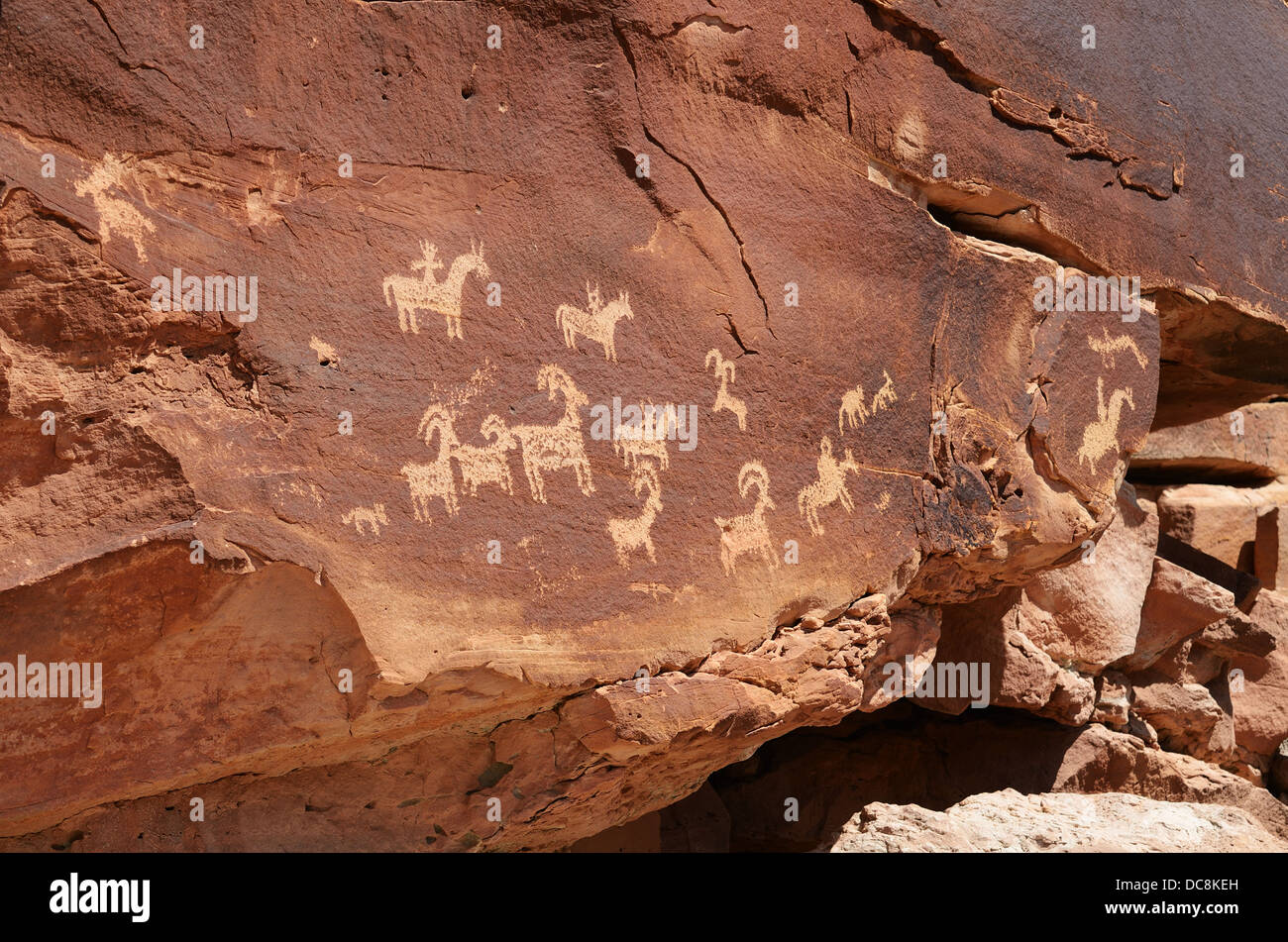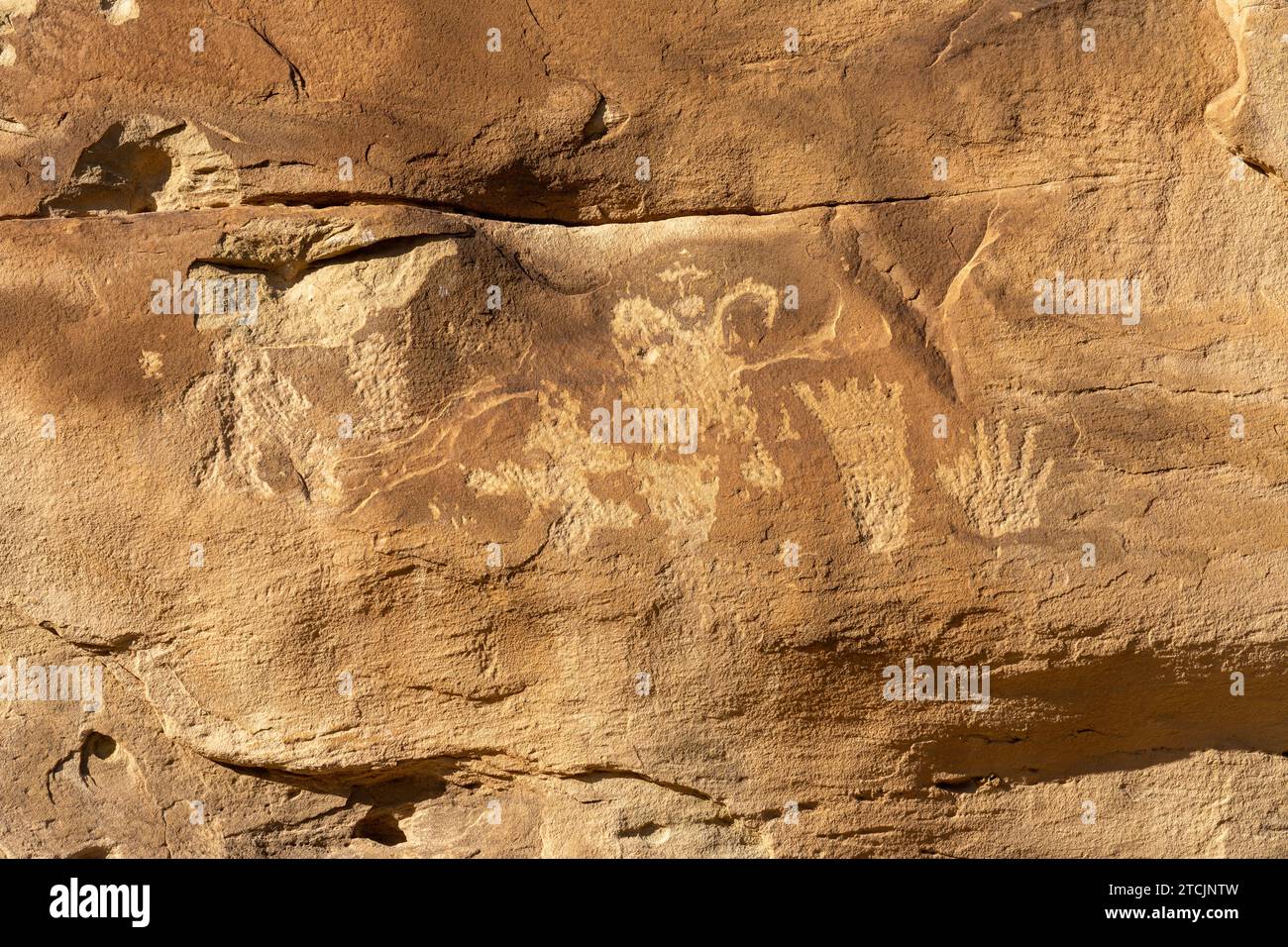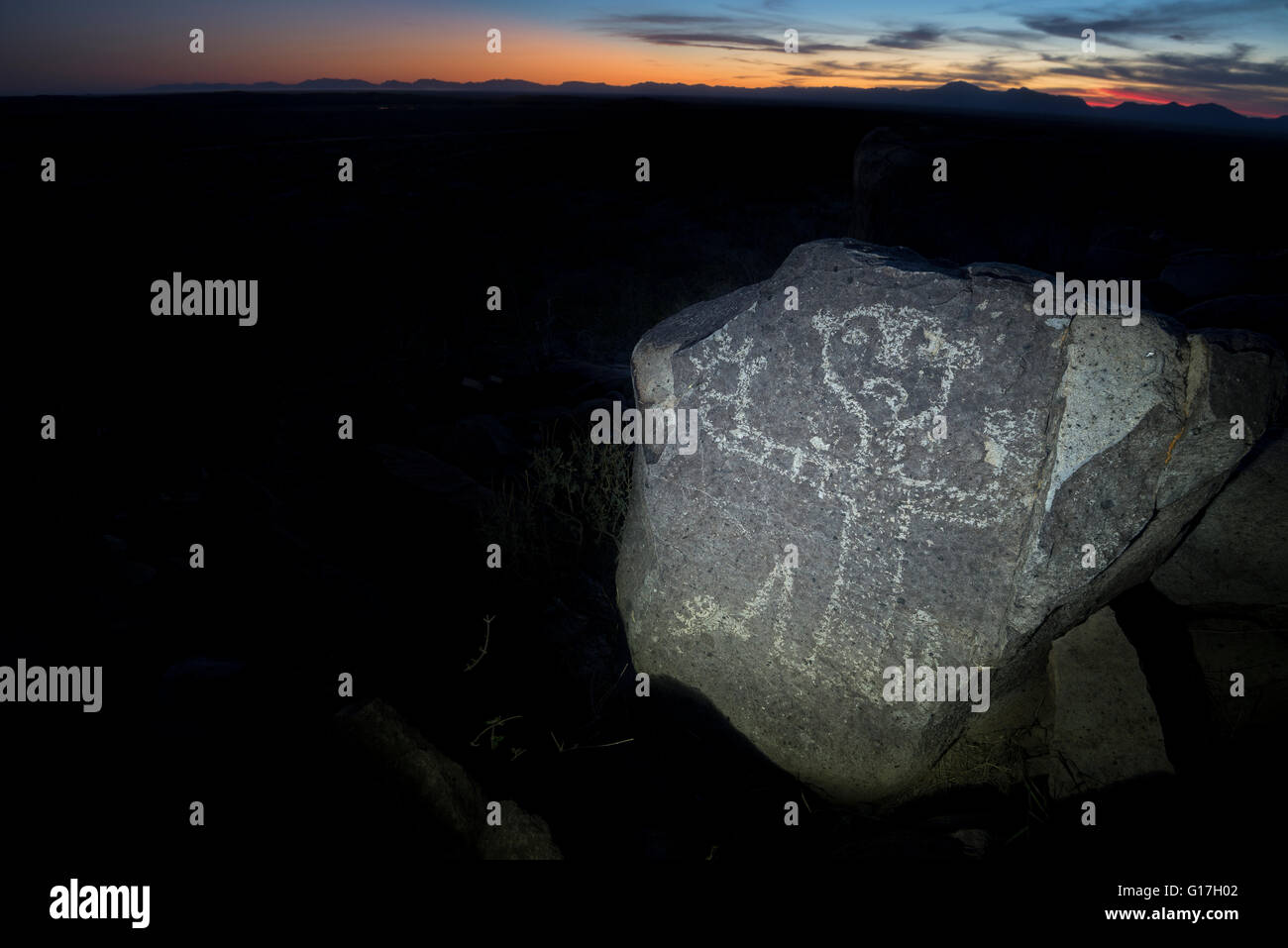
Whispers in Stone: Unveiling the Ancient Art of Native American Petroglyphs
Forget the sterile exhibits of a museum; to truly connect with the ancient narratives of North America, you must step onto the sun-baked earth, where history is etched directly into the landscape. We’re talking about petroglyph sites—vast, open-air galleries of rock art, created by Indigenous peoples over thousands of years. These aren’t just pretty pictures; they are the original maps, the spiritual records, and the enduring voices of cultures that shaped this continent long before European arrival. For the intrepid traveler seeking a profound cultural experience, a journey to these sites offers an unparalleled connection to the past.
While countless such sites dot the American Southwest, none offers as comprehensive and accessible an immersion as Petroglyph National Monument in New Mexico. Spanning 17 miles along Albuquerque’s West Mesa, this remarkable monument safeguards one of the largest petroglyph sites in North America, featuring an estimated 25,000 images. It serves as an ideal entry point for understanding the sheer scale, diversity, and enduring significance of Native American rock art, truly acting as a living, breathing historical archive.
Petroglyph National Monument: A Traveler’s Deep Dive

Your adventure begins at the Visitor Center, an essential first stop, though it contains no petroglyphs itself. Here, park rangers and informative displays provide critical context. You’ll learn about the various cultural groups who created these images—primarily the ancestors of today’s Pueblo people, but also early Spanish settlers—and the approximate timelines, spanning from 300 to 700 years ago, with some images dating back 3,000 years. Crucially, you’ll receive maps and guidance on the monument’s various hiking trails, each offering a distinct experience.
The monument is divided into several primary viewing areas, each with its own character and level of accessibility:
1. Boca Negra Canyon: The Accessible Gateway
For those with limited time or mobility, Boca Negra Canyon is an excellent starting point. Three paved loops—Mesa Point, Macaw, and Rinconada trails—offer close-up views of around 100 petroglyphs. The trails are short, well-maintained, and provide a fantastic introduction to the diversity of images. Here, you’ll quickly encounter the classic figures: human-like forms (anthropomorphs) with elaborate headdresses, bird tracks, spirals, sun symbols, and enigmatic geometric designs. The sheer density of images here is captivating, allowing for quick appreciation of the art’s variety and prevalence. It’s a taste, an appetizer, that invariably whets the appetite for more.

2. Rinconada Canyon: The Secluded Journey
For a more immersive experience, Rinconada Canyon demands a longer commitment. This 2.2-mile round trip hike along a sandy wash leads to over 300 petroglyphs, many of them larger and more elaborate than those found at Boca Negra. The trail is unpaved and less crowded, offering a profound sense of solitude and connection to the vast landscape. The quiet allows you to truly contemplate the ancient artists and their intentions. Here, the rock faces feel like silent storybooks, each image a word, a sentence, or an entire paragraph in a language you slowly begin to decipher. You might spot complex masked figures, intricate animal representations, or abstract symbols that defy easy categorization, inviting personal reflection and interpretation.
3. Piedras Marcadas Canyon: The Expansive Gallery
Piedras Marcadas Canyon, meaning "marked rocks" in Spanish, is another significant area, boasting over 400 petroglyphs. A 1.5-mile loop trail guides visitors through a rich collection of images, often featuring clusters of glyphs on large boulders. This area tends to be moderately busy, offering a good balance between accessibility and a feeling of being ‘out there.’ The sheer volume of petroglyphs here highlights the importance of this specific location to the ancient people, suggesting it was a frequently visited and highly significant cultural crossroads. You’ll find a striking array of geometric patterns, human and animal figures, and mysterious markings that hint at rituals, clan symbols, or astronomical observations.

4. The Volcanoes Day Use Area: A Different Perspective
While not rich in petroglyphs, the Volcanoes Day Use Area offers a crucial geological context. Here, you can hike to the tops of dormant volcanoes that form the western backdrop of the monument. From these heights, you gain a panoramic view of the vast West Mesa, the Rio Grande valley, and the distant Sandia Mountains. This perspective helps in understanding why this specific basalt escarpment was chosen. The dark, volcanic rock provided a perfect canvas, and the location offered commanding views, potentially important for defense, hunting, or ceremonial purposes. It allows you to see the landscape as the ancient inhabitants might have, offering clues to their strategic and spiritual choices.
Beyond the Images: Understanding the "Site Maps"
The term "petroglyph site maps Native American" is profoundly apt, extending far beyond the literal interpretation of cartographic drawings. These petroglyphs served as multi-layered communication tools, often functioning as:
- Territorial Markers: Some glyphs might have indicated clan territories, hunting grounds, or resource locations. A unique symbol could have proclaimed, "This is our land."
- Wayfinding & Resource Indicators: While not detailed maps, certain symbols could have pointed towards water sources, safe passages, or areas rich in specific plants or game. A spiral or a zigzag might indicate a journey or a river.
- Ceremonial & Spiritual Landscapes: Many petroglyphs mark sacred spaces, places for prayer, rituals, or vision quests. The images themselves were not just art but active participants in these ceremonies, connecting the earthly realm with the spiritual. They mapped the cosmos onto the rock face.
- Astronomical Observations: Figures like sun daggers (where a shaft of light hits a specific glyph at a solstice or equinox) demonstrate an advanced understanding of celestial movements. These were calendar maps, tracking time, seasons, and agricultural cycles.
- Historical Records & Oral Traditions: Petroglyphs could commemorate significant events, battles, migrations, or the lineage of leaders. They served as mnemonic devices, aiding in the transmission of complex oral histories across generations.
- Identity & Clan Symbols: Like modern-day logos, certain designs might have represented specific families, clans, or cultural groups, marking their presence and identity within the landscape.

To truly appreciate these "site maps," you must try to shift your perspective. Imagine a world without written language, where the landscape itself became the parchment. Every etched line held meaning, every figure a narrative. The juxtaposition of a human-like figure with an animal track, next to a spiral, might not be a random artistic flourish, but a carefully constructed message about a hunting journey, a spiritual encounter, or a significant event tied to that specific place and time.
The Traveler’s Code: Respect and Preservation
Visiting petroglyph sites is a privilege that comes with a profound responsibility. These are not mere tourist attractions; they are sacred spaces and irreplaceable cultural heritage.
- Do NOT Touch: The oils from your skin can permanently damage the fragile rock surfaces and accelerate erosion. Looking is enough.
- Stay on Trails: This protects both the delicate desert ecosystem and ensures you don’t inadvertently damage undiscovered glyphs or archaeological features.
- Leave No Trace: Pack out everything you pack in. Do not disturb rocks, plants, or any natural features.
- Respect the Silence: Allow the natural sounds of the desert to prevail. This enhances your experience and respects the spiritual nature of the sites.
- Photography: Capture the beauty, but do so respectfully. Avoid using flash directly on the glyphs, and be mindful of other visitors. Early morning or late afternoon light often provides the best contrast for photography.
- Prepare: The desert environment can be harsh. Bring plenty of water (more than you think you’ll need), wear sturdy hiking shoes, a wide-brimmed hat, and sunscreen. Weather can change rapidly.
Beyond New Mexico: A Tapestry Across the Southwest
While Petroglyph National Monument offers an excellent starting point, the petroglyph story extends across the American Southwest. Other notable sites worth exploring, each with its unique character, include:
- Newspaper Rock State Historical Monument, Utah: A single, massive rock panel densely covered with petroglyphs, created over 2,000 years by different cultural groups. It’s like a visual newspaper of the ancients.
- Valley of Fire State Park, Nevada: Famous for its stunning red sandstone formations, it also boasts impressive petroglyph panels, particularly at Atlatl Rock.
- Three Rivers Petroglyph Site, New Mexico: Another fantastic site, offering over 21,000 petroglyphs created by Jornada Mogollon people between 1000 and 1400 AD, often less crowded than PNM.
- Saguaro National Park, Arizona: While known for its iconic cacti, the park also contains ancient Hohokam petroglyphs, especially visible near the Signal Hill trail.
Each of these sites, and countless others, offers a unique window into the past. They are not just collections of images; they are open-air libraries, spiritual sanctuaries, and historical markers left by generations who understood their profound connection to the land.
Conclusion: A Journey Through Time
A visit to a Native American petroglyph site, particularly the expansive Petroglyph National Monument, is more than just a hike; it’s a journey through time, a cultural immersion, and a spiritual awakening. It’s an opportunity to stand in the very footsteps of ancient artists, thinkers, and storytellers. As you trace the outline of a handprint or ponder the meaning of an abstract design, you are not merely observing; you are participating in a dialogue that has transcended millennia.
These rock art "site maps" are silent, yet they speak volumes. They compel us to slow down, to observe, to respect, and to acknowledge the rich, complex tapestry of human history that shaped this land. For any traveler yearning for an authentic, educational, and deeply moving experience, unlocking the secrets etched in stone is an adventure that promises to resonate long after you’ve left the desert sun behind. Go forth, explore, and let the whispers in stone tell their ancient tales.

